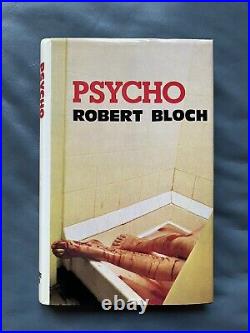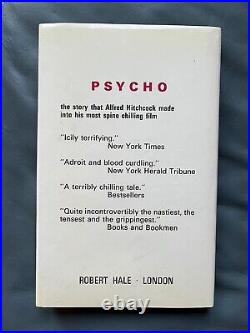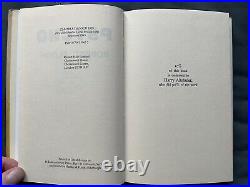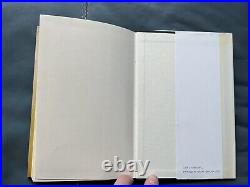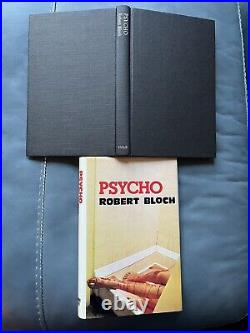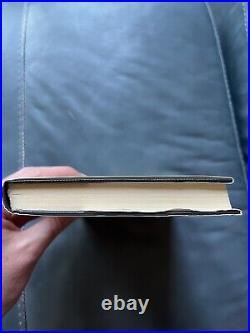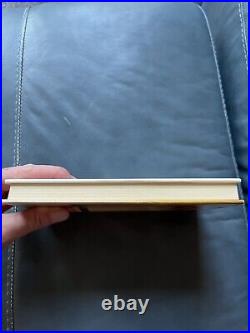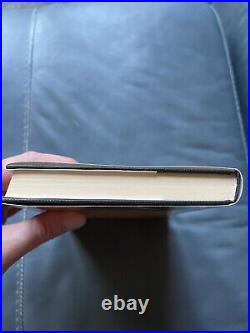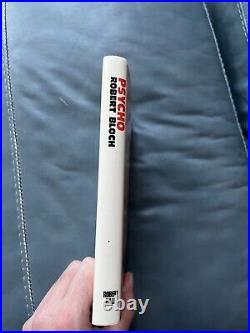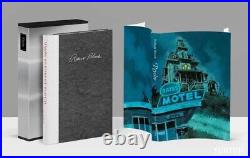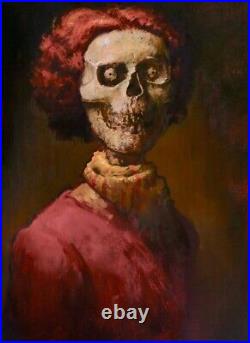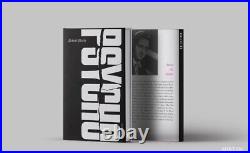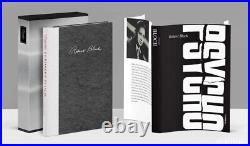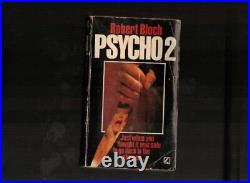
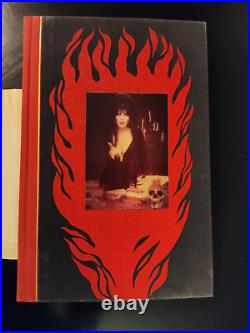
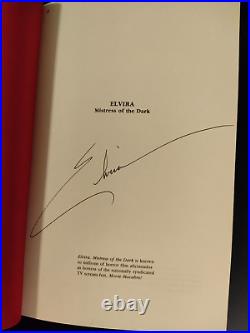
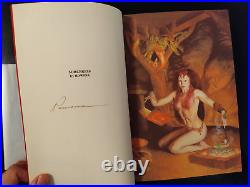
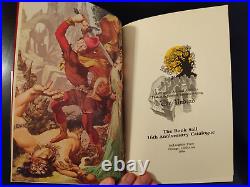
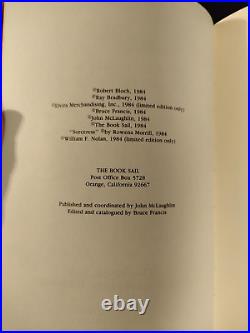
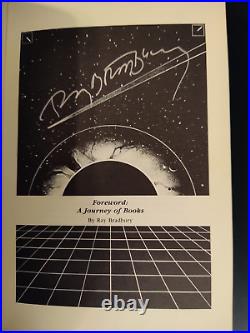
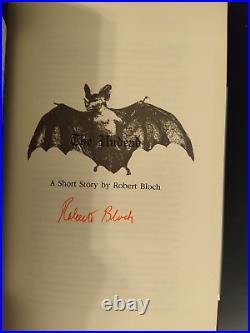
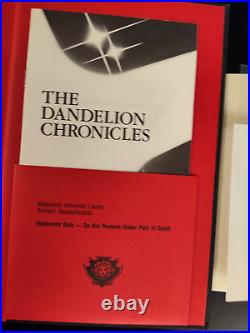
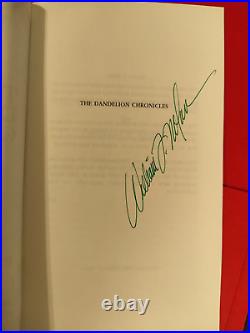
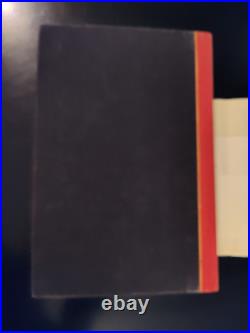
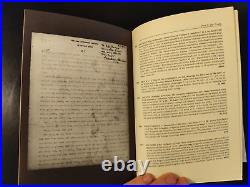
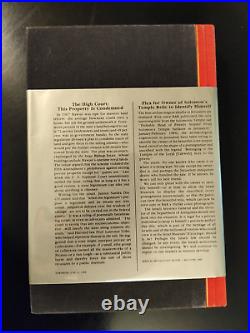

This edition published in 1984 in a limited printing of 400 copies, of which this is #203. Includes a 3D picture of Elvira on the front cover, and the first printing of the story The Dandelion Chronicles by William F. Nolan in the back pocket (inside the rear cover). Also includes the 2/3-height MOOT dust jacket wrap. Signed by Elvira, artist Rowena, Ray Bradbury (in metallic ink), Robert Block, and William F. Nolan (in his story). Original red and black decorated cloth. The numbering on the limitation page is hand-numbered using an ink compound containing human blood. Contains detailed descriptions of items in the sale, illustrations, photographs, and an additional story by Robert Bloch (The Undead). Faults listed above, otherwise clean pages and tight binding. Feel free to ask any questions. If you need more photos of an item please just ask. This item is in the category “Books & Magazines\Antiquarian & Collectible”. The seller is “dipworld” and is located in this country: US. This item can be shipped to United States, Canada, United Kingdom, Denmark, Romania, Slovakia, Bulgaria, Czech Republic, Finland, Hungary, Latvia, Lithuania, Malta, Estonia, Australia, Greece, Portugal, Cyprus, Slovenia, Japan, China, Sweden, Korea, South, Indonesia, Taiwan, South Africa, Thailand, Belgium, France, Hong Kong, Ireland, Netherlands, Poland, Spain, Italy, Germany, Austria, Bahamas, Israel, Mexico, New Zealand, Philippines, Singapore, Switzerland, Norway, Saudi Arabia, United Arab Emirates, Qatar, Kuwait, Bahrain, Croatia, Republic of, Malaysia, Brazil, Chile, Colombia, Costa Rica, Panama, Trinidad and Tobago, Guatemala, Honduras, Jamaica, Antigua and Barbuda, Aruba, Belize, Dominica, Grenada, Saint Kitts-Nevis, Saint Lucia, Montserrat, Turks and Caicos Islands, Barbados, Bangladesh, Bermuda, Brunei Darussalam, Bolivia, Ecuador, Egypt, French Guiana, Guernsey, Gibraltar, Guadeloupe, Iceland, Jersey, Jordan, Cambodia, Cayman Islands, Liechtenstein, Sri Lanka, Luxembourg, Monaco, Macau, Martinique, Maldives, Nicaragua, Oman, Peru, Pakistan, Paraguay, Reunion, Vietnam, Uruguay.
- Binding: Fine Binding
- Place of Publication: Orange, California
- Language: English
- Special Attributes: 1st Edition, Dust Jacket, Illustrated, Limited Edition, Numbered, Signed, Slipcase, Deluxe Edition
- Author: Robert Bloch
- Publisher: McLaughlin Press
- Topic: Horror
- Country/Region of Manufacture: United States
- Subject: Books on Books
- Modified Item: No
- Year Printed: 1984
- Original/Facsimile: Original


